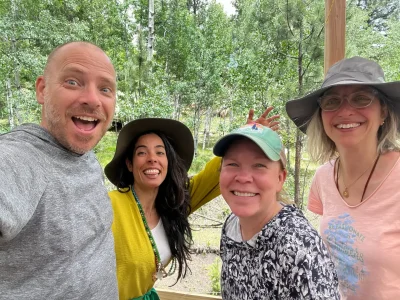
Retreat Summary: The Connected Path at La Tierra
A raw, reflective journey into nature, community, and conscious healing
- Plant Medicine, Spiritual
- Complementary Approach, Premium Content, Recovery & Management, Resource Summary
In June 2025, we traveled deep into the Colorado wilderness to participate in a 5-day Connected Path Retreat at La Tierra, a spiritual and wellness sanctuary near Florissant created by Dr. Yadira Velazquez, MD. Tucked within 15 rugged acres of off-grid mountain land, the retreat was designed for individuals and families affected by functional illnesses to reconnect—with nature, with others, and with themselves.
We arrived with curiosity and open hearts, hoping to better understand how time in nature, away from our routines, might help us feel more grounded and connected. With a desire to learn and feel the impact of the land itself, we stepped into the week with open-mindedness and respect.
Click here to read full summary
A Return to Simplicity
From the moment we turned off the paved road, the retreat began. The winding dirt paths, unfiltered mountain air, and the absence of cellular service signaled a shift from convenience to intention. Sleeping arrangements were simple: camping tents, some private and others shared, set just across a small wooden bridge from the communal gathering space. Composting toilets and solar-heated outdoor showers served the area, and while the terrain was rugged and the amenities minimal, everything was offered with thoughtfulness and care.
Meals were lovingly prepared by Dr. Velazquez’s mother, a Cuban-American cook whose vibrant, plant-based dishes brought warmth and nourishment to each day. The scent of garlic and cumin often drifted through camp, drawing us to the outdoor kitchen. Gluten- and dairy-free needs were thoughtfully accommodated, and the food itself became a quiet centerpiece of connection and care.
“Upon arriving at the retreat center, I was immediately captivated by the quiet magnificence and beauty of the land. I felt my heart and spirit expand and a deep calm settled in my body and mind. Most astonishing of all, though, was the strong and welcoming sense of community that formed so effortlessly and completely between all of the people who had gathered there.”
Michele P.
An Invitation to Deepen
Each day brought a new rhythm of experience: grounding practices in the morning, communal meals, quiet reflection, and optional plant medicine ceremonies led by Dr. Velazquez—a physician and guide with deep reverence for ancestral wisdom. We began with a Cocoa ceremony, honoring its Aztec and Mayan roots. The ritual offered space to reflect on personal intention and collective connection. Though spiritual language was used, participants were encouraged to interpret the experience in alignment with their own beliefs.
From there, the retreat introduced other ceremonial options including psilocybin microdosing and cannabis rituals, all thoughtfully facilitated. These practices reflect a growing body of evidence highlighting the potential therapeutic value of psychedelics in addressing depression, anxiety, and emotional disconnection. As Carhart-Harris and Goodwin (2017) note, compounds like psilocybin—especially when paired with intentional preparation and support—may offer rapid and enduring psychological benefits, including enhanced emotional openness and reduced depressive symptoms.
More recently, researchers like Dr. Matt Butler, a neuropsychiatrist at King’s College London, have begun exploring these possibilities in direct relation to Functional Neurological Disorder. In a 2023 study of over 1,000 individuals with FND, Butler and colleagues found that nearly half of respondents had tried legal psychoactive substances to manage their symptoms, and 46% expressed interest in medically supervised psychedelic therapy—should it be found safe and effective. These findings suggest a real and growing openness within the FND community to explore new, research-based options for relief.
At the same time, these are not without risk. There can be emotional, physical, and psychological side effects that vary widely by individual. Dr. Velazquez approaches these conversations with care and discernment, offering compassionate guidance and working through safety and readiness with each participant beforehand.
“It’s a piece of earth that will give peace and serenity with the ability to further your knowledge of your inner soul so you may start or continue your journey in conquering FND.”
Nick M.
Moments that Stuck
Among the most meaningful were the simple ones:
- Morning coffee by the fire after a cold mountain night.
- Watching woodpeckers dart between trees—an invitation to mindfulness through stillness and observation.
- A mule deer stepping silently through a yoga session in the open field.
- Creating art throughout the space to deepen into creativity as a form of healing.
- Conversations with strangers who quickly became companions.
- The humbling realization of how far we’ve drifted from our childlike ease in nature.
We found ourselves reflecting not just on healing, but on how disconnected our modern lives have become from the natural world—and from ourselves.
Reflections + Realities
This was not a luxury retreat. It was unpolished, sometimes uncomfortable, occasionally profound. It asked a lot: physical effort, emotional openness, spiritual curiosity. In return, it provided space to slow down, reconnect, and experience wellness beyond the bounds of symptom management.
The stillness of the land offered something rare—time for personal reflection, clarity, and calm.
“At the retreat and among the land. I am surrounded by the quiet, yet I hear the Earth all around me—the rustling of the aspen leaves, the melodic bird’s song, and the wind brushing against the smooth boulders.”
Amanda H.
Yet within the stillness also came unease: fear of the unknown, worry about being far from home, and vulnerability in stepping into new experiences. These moments of tension became part of the journey too—a space to sit with discomfort, to be introspective and self-reflective in the presence of a supportive, nonjudgmental community.
Final Thoughts
La Tierra’s vision—to support functional healing through nature, community, and ancestral practice—is admirable and deeply needed. The retreat offered space for restoration, reflection, and reconnection—reminding us what’s possible when care is taken to create environments of trust and openness.
Places like La Tierra can play a unique role in bridging tradition and innovation—so long as they grow with intention, safety, and inclusivity at their core.
We are grateful to have witnessed the early stages of something that, with continued development and support, could become a deeply nourishing refuge for those seeking rest, reconnection, and renewal.
Reference
Carhart-Harris, R. L., & Goodwin, G. M. (2017). The therapeutic potential of psychedelic drugs: Past, present, and future. Neuropsychopharmacology, 42(11), 2105–2113. https://doi.org/10.1038/npp.2017.84
Butler, M., Seynaeve, M., Bradley-Westguard, A., Bao, J., Crawshaw, A., Pick, S., Edwards, M., Nicholson, T., & Rucker, J. (2023). Views on using psychoactive substances to self-manage functional neurological disorder: Online patient survey results. Journal of Neuropsychiatry and Clinical Neurosciences, 35(1), 77–85. https://doi.org/10.1176/appi.neuropsych.21080213
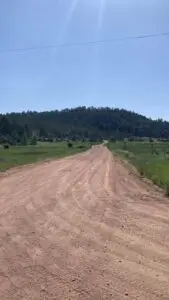
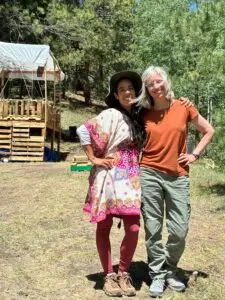

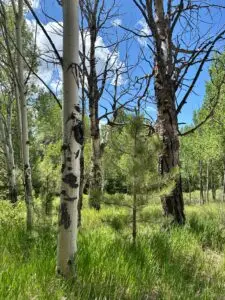

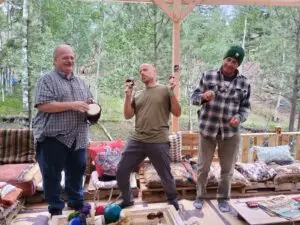
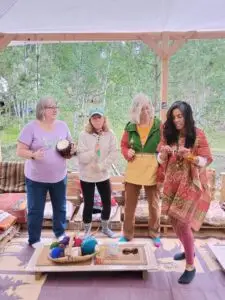
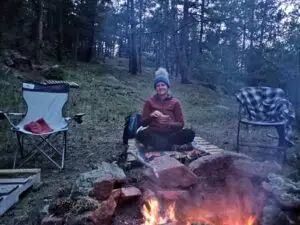
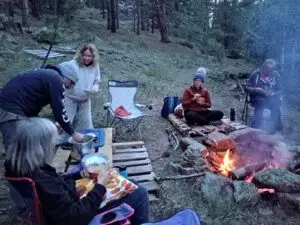
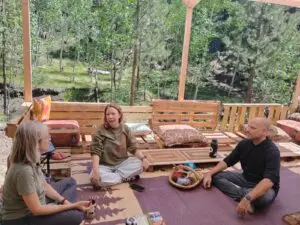
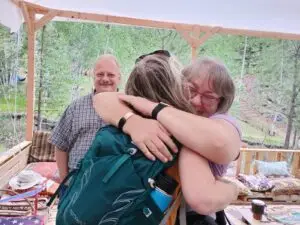
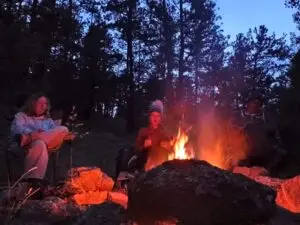

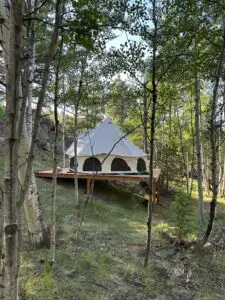
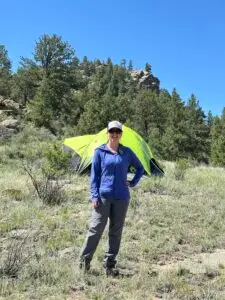
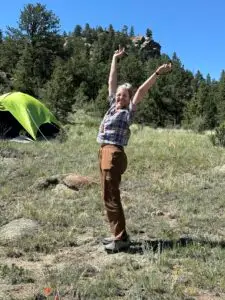

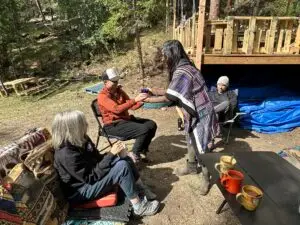
Written by James Hopper and Amanda Hopper, following their participation in the June 2025 Connected Path Retreat at La Tierra. This reflection is based on personal experience and is not intended as medical advice. Individuals considering plant medicine or alternative therapies should consult with qualified healthcare professionals to determine what is safe and appropriate for their unique needs.
